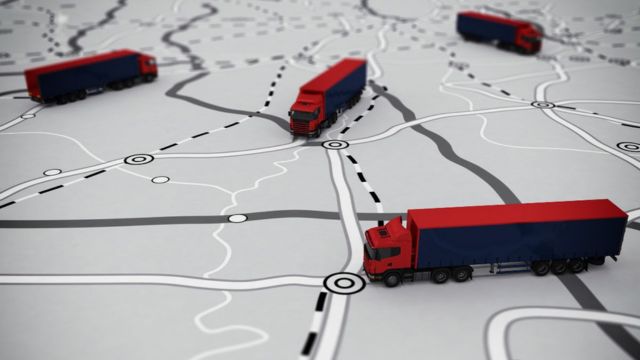S&OP – 13 Years On, What Have We Learned and What Has Changed?
In December 2006, I published an article titled “S&OP or just good supply chain planning?” The article looked at what Sales and Operations Planning is, what it isn’t, and whether companies were on the right path to implementing it. I wondered: is S&OP just too hard to implement? Could the majority of the benefits be achieved by first focusing on establishing good supply chain planning? Nearly 13 years later, I feel compelled to reflect on this old write-up and explore what, if anything, has changed. There have been significant advances in both technology and supply chain thinking over the past decade. Would I still write the same article today? As I saw it, the challenges back then were as follows:
- Sales and Operations activities are not aligned, trading makes promises and creates plans that supply cannot fulfill, leading to poor customer service and a blame culture between functions.
- A lack of communication and a poor understanding of requirements and constraints mean that small problems quickly escalate into large issues, adversely impacting company performance.
- Different functions are focused on satisfying their own priorities in isolation with time and resources being wasted, again impacting service and performance.
- Decisions are taken in isolation and based on judgmental bias, not fact.
- Excess inventories, expediting, poor order fulfillment, overtime, and poor resource utilization are a facet of life.
All of this creates a reactive culture of undisciplined business processes, leading to unnecessary waste and adversely impacting your bottom line.
The majority of organizations I speak to today are still facing some or all of these challenges. My argument back then was that if you could relate to any of these it was because you were not yet fully exploiting the benefits of an effective S&OP process. I still agree with this today.
What is Sales and Operations Planning?
Here’s how I answered that question 13 years ago:
S&OP is the business process adopted to manage the balance and trade-off between the conflicting preferences of the supply and demand side of the supply chain. Rather than sub-optimizing business performance by focusing on the achievement of individual functional targets, the aim of the S&OP process is to optimize by ensuring that the decisions taken are informed by what is best for the total business.
A well-executed Sales and Operations Planning process should drive the following:
- Clear and formal communication between the demand side and the supply side of the business.
- Balancing expected demand with the capabilities of in-house and external production facilities.
- Resolving future problems before they manifest themselves.
- Responding effectively to shortages and surpluses in the supply chain.
The result of which should be:
- Lower inventory levels
- Reduced operating costs
- Maximized customer service and sales revenue
- Maximized profitability and return on assets
This definition of what S&OP is and what the objectives are is still valid today at this high level. But there are significant differences in how we can achieve them today.
The role of forecasting
My original article focused very heavily on forecast accuracy and its role in supply chain planning. I proposed the goal of S&OP was to achieve one number and one plan driving the entire business. Well–executed S&OP could be recognized by an integrated plan starting at one end with a demand forecast and resulting in supply and resource plans to meet that forecast.
However, our supply chains have evolved over the past decade. We are dealing with increasing lead times, variability, SKU proliferation, and churn, while our customers demand increasing levels of service. The so called VUCA world we now have to deal with means forecasts have gotten less accurate. Despite this, most supply chain technology is still focused on the forecast. It’s time to challenge this and recognize that this old approach of pushing to forecast and safety stock no longer works.
Most supply chain technology is still focused on the forecast. It’s time to challenge this and recognize that this old approach of push to forecast and safety stock no longer works. – Tweet this.
If I were writing the article today, I would be advocating to break the link between forecasting and operational planning using a demand-driven approach enabled by DDMRP (more on this in a subsequent blog). In this model, the focus of forecasting moves to a more aggregate level and concentrates on the tactical and strategic horizons, not the operational ones.
Too many S&OP processes today still get bogged down in forecast accuracy debates within the operational horizon. The S&OP process should now focus on what capability needs to be in place to cope with the demand we expect to get. The output here is no longer an MPS but instead, the parameters that define our operating model; decoupling points, control points, and buffer sizes.
One number, one plan
13 years ago, the goal of S&OP as I saw it, was to achieve one number, one plan. Because of the focus on forecasting this quite literally meant a single demand plan that via DRP and MRP was cascaded right through the entire supply chain, creating a single plan of what would be made, bought, stored, and shipped. Apart from the risk of basing our entire plan on a forecast number, the only thing which we can guarantee is that it will be wrong. This approach also misses the opportunity and power of scenario modeling.
Technology advances and cloud deployment mean that today advanced analytics and optimization capabilities are available (or should be) to all. We should now be able to do the things we wanted to 13 years ago but could not achieve because we lacked technical capabilities.
In today’s VUCA world, scenario and what-if modeling has to be an essential part of any S&OP process. Rather than one number/one plan, S&OP should be looking at a range at either side of a target with multiple scenarios being evaluated. The scenarios don’t just consider different demand or capacity plans but also different objectives. What are the implications if we look to minimize cost versus maximize service? what happens when I segment my product and customer portfolios and apply different objectives at this level?
One of the barriers to a successful deployment of S&OP has always been getting stakeholders outside of the supply chain to engage fully with the process. The type of scenario analysis described above drives real insight to support effective decision-making. If enabled through appropriate technology, it can also be done at a pace to match business decision-making. Not surprisingly, the entire business quickly becomes engaged.
Summing up…
13 years on, the WHY of Sales and Operations Planning has not fundamentally changed but the advancement of technology and the new normal of Volatility, Uncertainty, Complexity, and Ambiguity means we need to adapt the HOW.
The WHY of S&OP has not fundamentally changed but the advancement of technology and the new normal of VUCA means we need to adapt the HOW. – Tweet this






